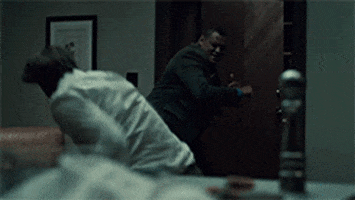Editing Techniques
Continuity Editing
Continuity editing is used to show a progression of events, which appear to be happening continuously. For example,
- Car speeding from the police
- Old person crossing the street
- Shot of car going out of control
- Close up shot of the old person terrified face
- Blank screen
Accelerating Time
This is a process where time is condensed and expanded to the point something that can take 1 hour to film, can be shown in 30 seconds. For example, a person going to their work place can take an hour or two but can be condensed to only show main parts of their journey.

This is so the movie can progress faster with the story-line.
Expanding Time
Sometimes a scene is dragged out longer to make it have a dramatic effect. For example, in Hannibal during the confrontation of the FBI agent and Dr. Hannibal Lecter. This means there will be an emotional effect.

Insert shot and Cutaways
An insert shot is a close-up of something that is within scene. These shots add extra detail which is crucial to understanding the scene. For example, a ECU (Extreme Close Up) can be used to show t difference between fraud money and genuine money. These are significant parts of the scenes that are shown.

Unlike insert shots which show crucial information within scenes using close ups, cutaways cut away from the main scene to add extra details and information about the surroundings.
Relational Editing:
Relational editing is a connection between scenes.
For example, if a man shoots a gun, the next scene should refer to what he shot at or it doesn't make sense.

Parallel Editing:
When scenes are put together to follow different story lines. For example, in "The Great Train Robbery (Film)", the creator constantly cut scenes to match different story lines.

Cross-cutting:
In a cross-cut the camera will cut away from one scene to another scene, which can suggest the simultaneity of these two actions.
Cause, Effect and Motivation:
Cause, effect and motivation are all linked as the cause can lead to the effect which then leads to the motivation. This helps the audience understand the storyline. For example, if a woman was murdered and she had killed someone before, in this case, the motivation would be revenge, which had a cause.
Thematic Editing:
Thematic editing is when two scenes are edited because of their relational value. This is mostly used in music videos, trailers for films and commercials
on TV.Parallel Editing:
When scenes are put together to follow different story lines. For example, in "The Great Train Robbery (Film)", the creator constantly cut scenes to match different story lines.

Cross-cutting:
In a cross-cut the camera will cut away from one scene to another scene, which can suggest the simultaneity of these two actions.
Cause, Effect and Motivation:
Cause, effect and motivation are all linked as the cause can lead to the effect which then leads to the motivation. This helps the audience understand the storyline. For example, if a woman was murdered and she had killed someone before, in this case, the motivation would be revenge, which had a cause.


Comments
Post a Comment